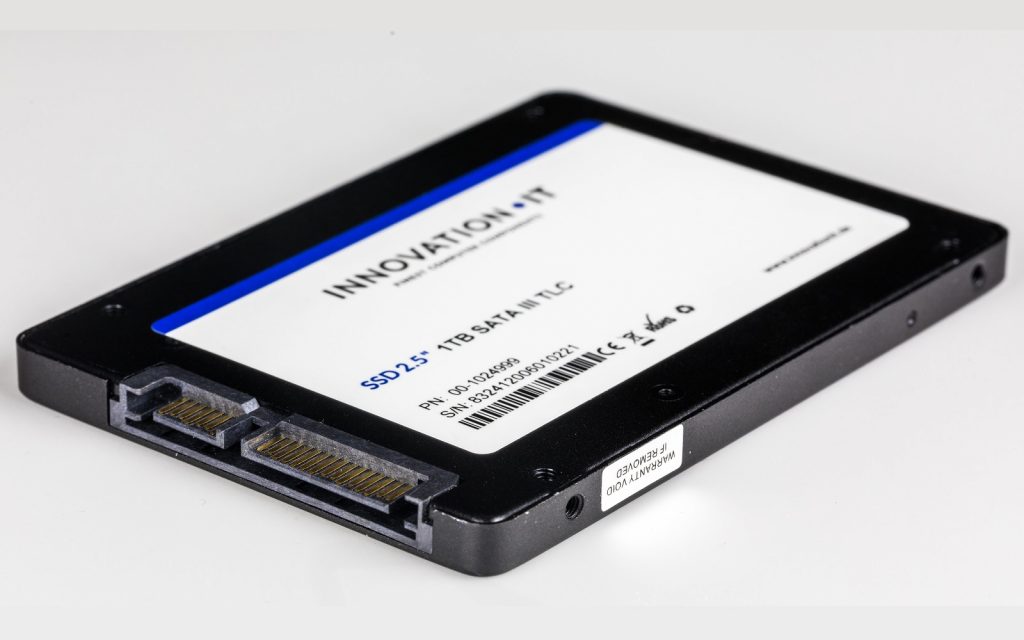Solid-state disks (SSDs) are so much better than regular hard drives since they’re so fast, but there’s also a downside: the memory they use to store your data instead of spinning platters has a limited lifespan, called ‘terabytes written’ or ‘total bytes written’ (TBW).
This can have implications for businesses that use solid-state storage inside their IT operations, as these drives can’t be installed and forgotten about – their limited shelf life is something businesses need to keep in mind and make a point of addressing every few years or so.
To help you get your head around all this, let’s dive into the details. Hopefully, by the end of the article, you’ll have a clearer idea of what you can do to mitigate the risk of SSD failure inside your business.
Please note, this isn’t an alarmist “YOUR SSDS ARE ABOUT TO DIE” article; it’s more informational to help businesses make SSD buying decisions that pair the right SSDs with appropriate workloads, since not doing so can be a bit of a disaster from an IT perspective.
The importance of TBW
SSDs all have a TBW rating. This number can usually be found buried deep inside their specification sheets and refers to the amount of data, usually in terabytes (hence ‘terabytes written’), that can be written to the drive during its warranty period before it is likely to show signs of failure.
Fortunately, TBW numbers are generally quite high. We say generally, because it’s not always the case, with some cheaper SSDs having much lower ratings than others of similar capacities. We’re talking 900 TBW on average for large drives, and as low as 40 TBW for smaller ones. Notably, some enterprise drives offer a TBW rating in petabytes – 1,000TB, or 1 million gigabytes.
What does this mean, practically?
An SSD’s TBW rating gives you an idea of how long the drive should last before memory cells start becoming unusable. Figuring that out comes down to the SSD’s expected workload, which will determine the amount of data that will typically be written to the drive in a day. Activities like video editing, for example, are more write-intensive than editing photos or general productivity.
You can estimate the drive’s lifespan by taking the typical daily volume of data the drive will process, and then extrapolating that out to find out how many terabytes it will write in a given time span. If this calculation gives you a number that is less than the TBW rating indicating that it will last longer than 5 years (the typical warranty period of an SSD), then you’re winning and the drive is fit for purpose.
For instance, many 4TB NVME drives available online in South Africa offer a 900 TBW lifespan. If the drive writes an average of 150GB per day, over a month that will be 4.5TB, give or take a few GB. In a year, it will write more than 54TB. In five years, it will have written around 270TB, which is still well below the 900 TBW threshold it is rated for. To exceed 900 TBW, you’d have to write around half a terabyte of data to the drive each day, consistently, for five years.
For smaller drives, the TBW figure drops. A 512GB drive can be expected to have a TBW of anything between 200 and 500, meaning maximum writes per day of 75GB-80GB before it hits its threshold if rated at 500 TBW.
SSD Lifespans
While this sounds like a lot, writing this much data every day is not impossible, especially for companies whose IT infrastructure serves a lot of data to their staff and customers, or for computers that do data-intensive tasks like video and photo editing.
Of course, it’s not really common for drives to consistently have so much data written to them, so clearly manufacturers build in quite a hefty safety margin. But, the point remains, that TBW is a good indication of an SSD’s expected lifespan and that what you do with them determines how long they are likely to last.
And while you can save a few bucks by buying SSDs that offer fairly low TBW ratings, you’re taking the risk that at some point in the next five years, that SSD could start failing. And nobody wants that.
What do we think?
If you’ve been looking for an SSD online and you’ve noticed that some are much less expensive than others despite offering the same capacity, check the TBW figure. It will quite likely be much lower on the less expensive one, indicating that the manufacturer has chosen to build their product with cheaper memory chips that are not as good, or which have less-expensive controllers on them that don’t do as good a job of managing the hardware.
Ultimately, we recommend not going for the cheaper option; rather pay for the more expensive drive with the higher TBW as it will almost certainly serve you better, for longer.
